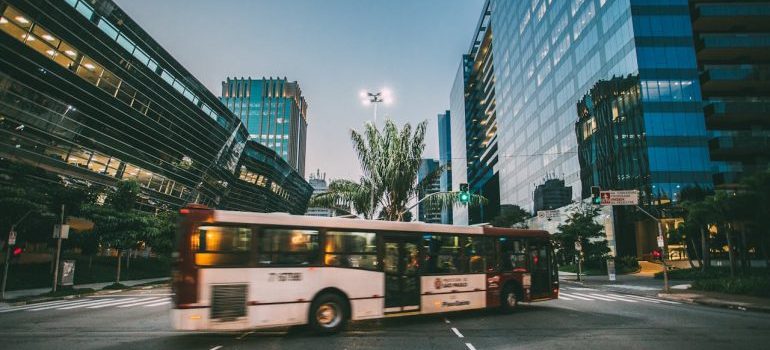After you move to Orlando, settling in involves more than finding a place to live. One big part of this transition is mastering your work routes. Orlando’s streets and highways might seem overwhelming initially, but with the right strategies, you can make your daily travels simpler while maintaining a good work-life balance. In this guide, we’ll explore how to easily learn new work routes after moving to Orlando. Also, in case you are still thinking about moving there and need to find the right movers, Best Movers Florida platform can be helpful!
Orlando’s Transportation Layout
Orlando is split into different areas, each with its vibe and lots of businesses. So, if you’re considering moving to Orlando for work, consider getting help from long distance movers. Downtown, which includes the Central Business District and the old Thornton Park, is where you find many offices, government buildings, and cool places like museums. There’s also the International Drive area, famous for fun things like theme parks and hotels, but it also has many businesses. Then you’ve got spots like Lake Nona, where you find tech companies, hospitals, and places where people do a lot of cool science things.

To get around all these places, it’s important to know the main roads and highways.
- Interstate 4, or I-4, is Orlando’s main road, going from the west side of the city to the east.
- 408 East-West Expressway is handy if you’re traveling between downtown Orlando and the western neighborhoods.
Also, if you don’t want to drive, there are other options too. You’ve got Lynx buses, which go all around the area, and SunRail, which is a train that connects downtown Orlando to nearby cities and suburbs up north. Knowing about these transportation choices makes it easier to plan how you’ll get to work and move around Orlando without any problems.
Planning Your Work Commute
Planning your work commute in Orlando is important for you so you can easily start your work day. Thankfully, technology offers a helping hand through apps like Google Maps and Waze. So, these apps not only map out your route but also provide real-time updates on traffic conditions, accidents, and road closures. They can advise alternate routes to help you avoid unexpected delays, helping you to reach your destination on time. Another important aspect of planning your commute is timing. Like lots of cities, Orlando gets busy with traffic during rush hours, usually in the mornings and evenings.
Additionally, don’t be afraid to try different routes to find the fastest way to work. Sometimes, a slightly longer route with less traffic can get you there quicker than the main roads. When considering a move to Orlando, it’s wise to enlist the help of some of the best movers in Orlando. Choosing reputable movers can ease the stress of moving, allowing you to settle into your new surroundings in Orlando more easily.

Public Transport and Carpooling
If you’re looking to hop on a bus or train, Lynx buses and SunRail are your go-to options. Lynx buses cover a network of routes across the region, making it easy to get around without a car. So, with frequent stops and schedules, you can plan your ride with confidence. SunRail is a great option for those traveling longer distances or looking to avoid the crowd of driving in traffic. People planning to move here can look for assistance from residential movers Orlando because they can make the process of moving easier. It will leave you enough time to get familiar with the transportation means. Additionally, carpooling is becoming more popular as a cheap and green way to get to work. You can join carpool groups or arrange rides with colleagues to share costs and help the environment by reducing emissions.
Adapting to Local Traffic After Moving to Orlando
Traffic in Orlando can get heavy, especially during rush hours and when lots of tourists are in town. Knowing which areas get jammed up and when can help you avoid sitting in traffic for ages. Plus, keeping an eye on local events and tourist seasons is key. Orlando is a hotspot for tourists, with big events like theme park openings and festivals bringing in huge crowds. When these events are happening, the roads can get clogged up. So, staying flexible and knowing what’s going on with transportation in Orlando can make your commute way simpler and more enjoyable.
Additional Commuter Resources
Understanding traffic patterns is just the start of a simpler commute in Orlando. Explore local commuter benefits, such as discounted transit passes or flexible work schedules. These can save you time and money while also helping reduce traffic and pollution. So, by using these resources, you’ll have a better daily commute experience. Also, consider using traffic apps to stay updated on real-time road conditions and plan your route accordingly. Many employers also offer remote work options or telecommuting opportunities, providing flexibility in your work schedule. So, don’t hesitate to carpool or use rideshare services to minimize your environmental impact further and enjoy a more social commute experience.

Adapting to Your New Work Routes After Moving to Orlando Can Be Simple
Adjusting to new work routes after moving to Orlando can initially present challenges, but with the right strategies and resources, it becomes a rewarding experience. So, by familiarizing yourself with Orlando’s transportation layout, planning efficient routes, and exploring alternative commuting options like public transport and carpooling, you can streamline your daily travels and maintain a healthy work-life balance. Getting around Orlando can be a breeze if you know the traffic flow and keep an eye on events and busy times. Stay patient and adaptable, and plan for success on your new work routes in Orlando.
